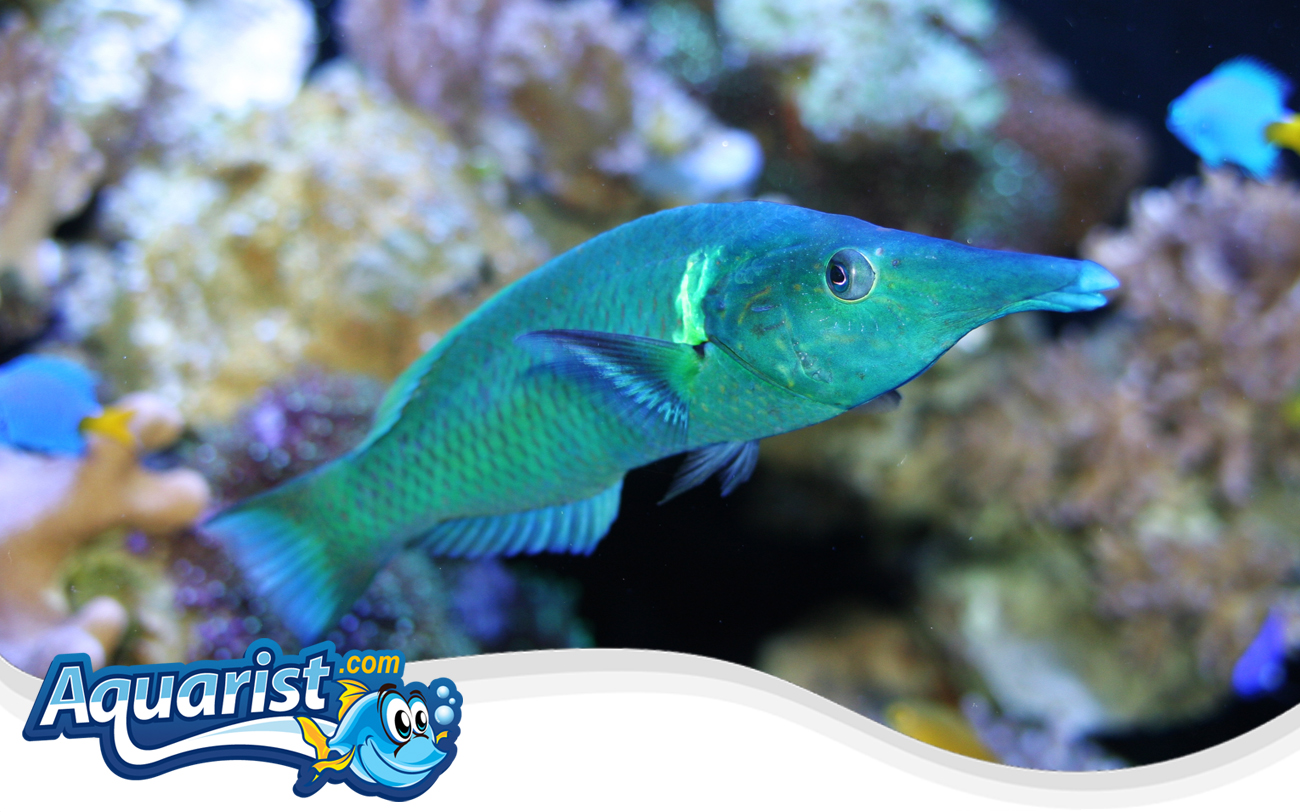Overview
- Found in the Indo-Pacific region, ranging from the Red Sea to the Central Pacific.
- Recognized for its elongated, beak-like snout, which it uses to probe for food.
- Sexually dimorphic, with males displaying a vibrant green hue and females appearing brown or black.
- Highly active swimmer, constantly on the move in search of food.
- Requires ample space due to its fast-paced and energetic nature.
Feeding
- Carnivorous diet, feeding on small crustaceans, worms, and benthic invertebrates.
- Readily consumes live and frozen foods such as mysis shrimp, brine shrimp, and chopped seafood.
- May eat small ornamental shrimp and crabs in reef tanks.
- Requires multiple feedings per day to maintain its high energy levels.
- Supplementing with high-quality pellets and flake food ensures balanced nutrition.
Habitat
- Typically found in coral reef environments, lagoons, and rocky coastlines.
- Prefers areas with abundant hiding spaces and open swimming room.
- Thrives in aquariums with live rock structures and moderate water movement.
- Best kept in large tanks (125 gallons or more) to accommodate its activity level.
- Adapts well to captivity but requires a secure lid to prevent jumping.
Fish Care
- Optimal water temperature: 74-80°F (23-27°C).
- Ideal pH range: 8.1-8.4, with a specific gravity of 1.023-1.026.
- Needs high water quality and strong filtration due to its active nature.
- Not suitable for small or nano aquariums due to its size and swimming habits.
- Regular water changes and stable conditions are essential for its health.
Compatibility
- Can be aggressive towards smaller, more timid tank mates.
- Best kept with other semi-aggressive or robust fish such as tangs, triggers, and large wrasses.
- Not suitable for reef tanks with small invertebrates, as it may prey on shrimp and crabs.
- May show territorial behavior, especially in smaller tanks.
- Does best in a spacious community setup with similarly sized fish.
Aquarium Behavior
- Constantly active, exploring every inch of the tank.
- Often seen darting between rocks and crevices in search of food.
- Can become dominant in the tank, particularly if not provided with enough space.
- Has a curious nature and interacts frequently with its environment.
- Thrives in tanks that offer both open swimming areas and hiding spots.


